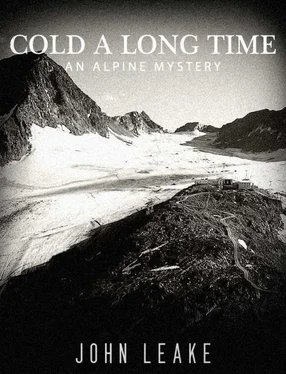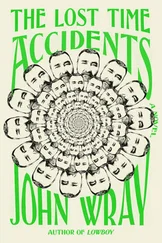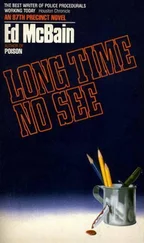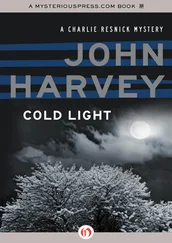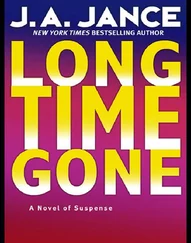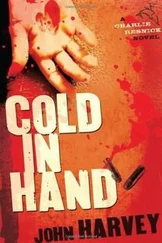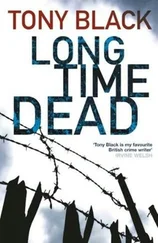After the snowboard emerged with Duncan’s body in 2003, Inspector Ortner wrote in his report that a physical evidence specialist at the Neustift gendarmerie station “definitely traced the snowboard found with the body to the dealer on the glacier from whom the missing Canadian had rented his equipment.” However, in his concluding report, Inspector Krappinger did not refer to the determination of the physical evidence specialist, but simply accepted the assertion of Seppi Repetschnig and two other rental shop employees that the board hadn’t come from them. Although Krappinger chose not to question Walter Hinterhoelzl in 2003, Walter told the fifth estate in 2006 that the board found with Duncan’s body had indeed come from the rental shop at the Eisgrat Station. In fact, he had helped Duncan to pick it out.
A likely explanation for the conflicting and dubious statements of Seppi and Walter is what Inspector Brecher told Lynda on June 28, 1990 and reiterated on July 2—namely, that although Duncan’s board had been returned, he may have used a second one that day.
“One should ask Walter,” Brecher concluded, insinuating that the second board had come from Walter, and not from the rental shop. This would explain why Duncan was found with hard ski boots and gaiters (inscribed with “Rental 3000”) from the rental shop, and a snowboard with soft bindings that didn’t match the boots—i.e., Walter had a different board for his pupil to try in the afternoon, but no soft boots in Duncan’s size.
In a letter dated February 26, 2007, Reinhard Klier told the MacPhersons that the snowboard found with Duncan’s body had come from Walter. Lynda considered this an outrageous defamation of the snowboard instructor, and she immediately informed Walter by email of what Klier had written about him. Walter never responded.
Even if Walter only helped Duncan to select his gear from the rental shop (as he told the fifth estate ) he still would have noticed his pupil’s abandoned clothing and inquired about him at the rental shop (across the hall), especially after Duncan didn’t show for his lesson the next day. Likewise, when Duncan didn’t return his equipment, someone at the rental shop would have told Walter that his student hadn’t brought back the valuable items. On August 10 at the latest, Duncan’s missing gear and abandoned clothes, shoes, and Saskatchewan driver’s license would have been cause for grave concern. Though it was, at that point, too late to rescue Duncan, Walter still would have become fully aware that something had befallen him on the slope.
Seppi certainly played along with the deception. His denial in 2003 that the Duret board had come from his shop did not account for the boots and gaiters, which did. And even if his shop didn’t carry the Duret brand, it was his duty to say so on September 23, 1989.
Appendix 3: Correspondence with Dr. Rabl
Note: On October 17, 2011 Lynda sent the following letter to Dr. Rabl as an email attachment. In his reply on November 10, 2011, he returned her letter and provided his answers to her questions in the spaces below each question. To avoid confusion between the questions and answers, I have placed his answers in italics.
17 October 2011
To: Dr. Walter Rabl
Institut für Gerichtliche Medizin
Müllerstraße 44
6020 Innsbruck
From: Lynda MacPherson
1630 Prince of Wales Avenue
Saskatoon, SK
S7K 3E4 Canada
Dear Walter,
It’s been almost a year since we last corresponded. The years fly off the calendar, and yet no matter how much time passes, Bob and I cannot seem to put to rest the mystery of what happened to our son so long ago.
As you may recall, back in 2009 we asked an author named John Leake to examine Duncan’s story and possibly write a book about it. You met with him at your institute in the autumn of 2009. After studying the case for the last two years, John has raised a number of questions that we had not considered before. I must confess that some of them are rather disturbing.
You always treated us with warmth and kindness, so we really don’t like questioning your involvement in the case. On the other hand, we also don’t like to speculate, so we have decided simply to ask you the following questions. We would be very grateful if you would answer them at your convenience, either by e-mail or by regular mail. If you would like to discuss them on the phone, please let me know the best time to call and I will assume the long distance charge.
Sincerely, Lynda
Question 1: When we first met you at your institute on July 24, 2003, we told you we wanted an autopsy, because it was important for us to know how Duncan died. You told us that you had not been authorized to perform a forensic examination, only an identification of the body. When we repeatedly told you that we wanted to know the cause of Duncan’s death, why didn’t you tell us that we could simply order a private autopsy?
I cannot remember exactly what we discussed in our first meeting, but I’m sure if we had talked about it, I would have told you the possibility of a private autopsy (in our Institute for private autopsies we demand a mandate by a lawyer and the permission of the local health office is necessary).
Question 2: You took us to view Duncan’s body; he was covered with a sheet up to his chest; we did not uncover him. After we had viewed Duncan’s body, I commented that I was surprised how good he looked, given he’d been in a glacier for 14 years. You told me this was because, shortly after Duncan died, the snow around him melted, and the ice acted like a coffin, protecting his body. Why did you not mention the damage to his limbs?
The damage of his body was not unusual for a corpse that has been transported by the glacier for 14 years. We prepared the corpse for you, so that you would see a complete body (normally we refer the relatives to the funeral to see the body—this was an exception for you). I did not mention the damage to his limbs and cervical spine because of ethical reasons. Persons who see a dead body of a beloved relative should remind a quiet and peaceful situation.
Question 3: In September 2006, in your interview for the fifth estate documentary, you said that the damage to Duncan’s limbs was similar to damage you had seen on glacier corpses. However, you then stated: “But the injuries themselves, I could not examine exactly.” Why could you not examine the injuries exactly? What hindered you?
We did not unclothe the body and reconstruct the remaining bone fragments because the damage that could be seen without unclothing was similar to other glacier corpses.
Question 4: In the same interview, you said that you never unclothed the body. However, we know from your photographs that you handled and saw Duncan’s amputated limbs, which were not clothed. Though you mentioned a cut to the left side of Duncan’s head in your ID report, you did not mention the trauma to his limbs. Why not?
In my report I mentioned that parts of the body were in different bags and that the head was completely severed. The clothes were heavily damaged, so we could take samples for DNA-analysis without unclothing the whole body.
Question 5: If you assumed that the limb amputations and fractures were caused by the sheering force of ice flow, why didn’t you note this in your report?
The examination was ordered just to identify Duncan.
Question 6: Over the last few years, we have shown the photographs and radiographs of Duncan’s corpse to a number of forensic doctors, forensic anthropologists, radiologists, trauma surgeons, orthopedic surgeons, and an alpine accident investigator, and all of them agree that the injuries on Duncan’s limbs have the characteristic injury patterns of contact with machinery. Given your extensive training and experience in forensic medicine, it is hard for us to understand why you didn’t share this perception—at least enough to recognize that the injuries to Duncan’s limbs warranted investigation. According to the Innsbruck public prosecutor Richard Freyschlag, you never contacted his office to express concern about the injuries to Duncan’s limbs. Did you really see no cause for concern that these injuries were caused by machinery, and not by glacier ice movement?
Читать дальше
